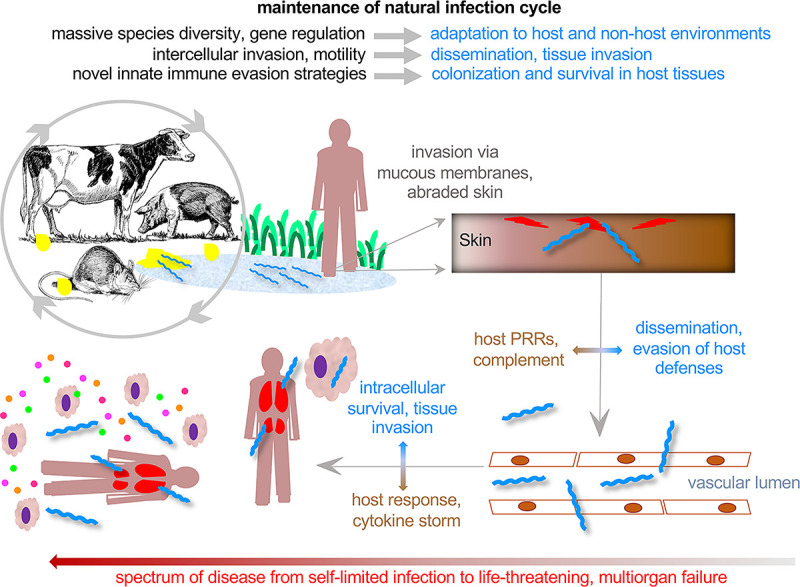Fig 1. Overview of leptospirosis.

Potentially human pathogenic leptospires are maintained in zoonotic infection cycles in wildlife and domestic animals. Leptospires colonize the renal proximal tubule of reservoir hosts and are shed in the urine. Urine contamination of water and mud are common sources of human exposure. In humans and disease susceptible animals, leptospires disseminate and cause symptomatic disease ranging from mild to severe and, in some cases, death.
